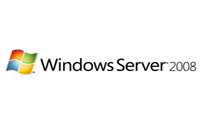One year on: Windows Server 2008
One year ago today Windows Server 2008 was released to a waiting tech world. We take a look at how it’s done.


This week marks the one year anniversary of one of Microsoft's most important releases Windows Server 2008.
Before it arrived on 27 February 2008, it had been five long years since the release of the last major version of Windows Server. In a world that was moving on from simple client/server applications and with server clouds on the horizon, Windows Server 2003 was looking long in the tooth.
After a year of Vista' bashing, Microsoft needed its server project to be well received, just to relieve some pressure. After all, this time last year, the panacea of a well-received Windows 7 was still a long way off.
A new approach
Windows Server 2008 marked a new approach for Microsoft and offered up a number of new innovations. Perhaps the most significant was a move to a modular approach, whereby users could install the parts of the server than they needed, rather than the kitchen sink' approach that Microsoft was typically historically known for. This was most clearly represented by Server Core, which installed the bare minimum features and APIs it didn't even have a GUI.
This approach does mean that there is a lot to get to grips with for a system administrator who's used to Windows Server 2003. To a large extent, it requires a shift in thinking something that Gareth Hall, the UK product manager for Windows Server, was willing to admit. "The customer does need to learn another skill set, but it has helped having a good reputation for 2003."
Hall revealed that a year on, Microsoft was happy with how things have panned out so far. "We're pretty pleased with it and our customers are too," he said. "It has been received positively, which we thought it would be judging from the initial reviews."
Get the ITPro daily newsletter
Sign up today and you will receive a free copy of our Future Focus 2025 report - the leading guidance on AI, cybersecurity and other IT challenges as per 700+ senior executives
Security, security, security
One of the biggest concerns that many potential customers had over the past few years was to do with security. But Hall was keen to report that things have gone smoothly in that area. "In terms of the product - the security - we've had no major challenges in that area."
In terms of features there's little argument that Microsoft hit all the right spots, such as a Core GUI only version, an enhanced and improved Internet Information Service with version 7, and enhanced security such as the Network Access Protection (NAP) that can quarantine any laptop that connects to a corporate network that's not fully patched and up to date.
Perhaps the most attractive feature, though, is its integration with Microsoft's virtualisation software Hyper-V. "Virtualisation is a huge growth area for us," said Hall. "If it's not the thing the makes people deploy, it certainly starts the conversation.
Benny Har-Even is a twenty-year stalwart of technology journalism who is passionate about all areas of the industry, but telecoms and mobile and home entertainment are among his chief interests. He has written for many of the leading tech publications in the UK, such as PC Pro and Wired, and previously held the position of technology editor at ITPro before regularly contributing as a freelancer.
Known affectionately as a ‘geek’ to his friends, his passion has seen him land opportunities to speak about technology on BBC television broadcasts, as well as a number of speaking engagements at industry events.
-
 Meta just revived plans to train AI models using European user data
Meta just revived plans to train AI models using European user dataNews Meta has confirmed plans to train AI models using European users’ public content and conversations with its Meta AI chatbot.
By Nicole Kobie
-
 AI is helping bad bots take over the internet
AI is helping bad bots take over the internetNews Automated bot traffic has surpassed human activity for the first time in a decade, according to Imperva
By Bobby Hellard